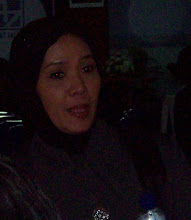Business:
An organisation that provides goods or services to earn profit.
Profits:
The difference between a business’s revenues and its expenses.
Economic System:
A Nation’s System for allocating its resources among its citizens
Factor of Production:
Resources used in the production of goods and services, natural resources, labour, capital, and entrepreneurs.
Labour (or human resources):
The physical and mental capabilities of people as they contribute to economic production.
Capital:
The funds needed to create and operate a business enterprise
Physical resources:
Tangible things organizations use in the conduct of their business
Information resources :
Data and other information used by business
Planned economy:
Economy that relies on a centralized government to control all or most factors of production and to make all or most production and allocation decisions.
Market economy:
Economy in which individuals control production and allocation decisions through supply and demand.
Market:
Mechanism for exchange between buyers and sellers of a particular good or service.
Input market:
Market in which firms buy resources from supplier households
Output market:
Market in which firms supply goods and services in response to demand on the part of households
Capitalism:
Market economy that provides for private ownership of production and encourages entrepreneurship by offering profits as an incentive
Mixed market economy:
Economic system featuring characteristics of both planned and market economies.
Privatisation: process of converting government enterprises into privately owned companies
Socialism:
Planned economic system in which the government owns and operates only selected major sources of production.
Demand:
The willingness and ability of buyers to purchase a good or service
Supply:
The willingness and ability of producers to offer a good or service for sale
Law of demand:
Principle that buyers will purchase (demand) more of a product as its price drops and less as its price increases.
Law of supply:
Principle that producers will offer (supply) more of a product for sale as its price rise and less as its price drops.
Demand and supply schedule:
Assessment of the relationships between different levels of demand and supply at different price levels.
Demand curve:
Graph showing how many units of a product will be demanded (bought) at different prices.
Supply curve:
Graph showing how many units of a product will be supplied (offered for sale) at different price
Market price (or equilibrium price):
Profit-maximizing price at which the quantities of goods supplied are equal
Surplus:
situation in which quantity supplied exceeds quantity demanded
Shortage:
situation in which quantity demanded exceeds quantity supplied
Private enterprise:
Economic system that allows individuals to pursue their own interests without undue governmental restriction.
Private property right:
The right to buy, own, use, and sell almost any form of property.
Competition:
Vying among businesses for the same resources or customers.
Pure competition:
Market or industry characterized by numerous small firms producing an identical product
Monopolistic competition:
Market or industry characterized by numerous buyers and relatively numerous sellers trying to differentiate their products from those of competitors
Oligopoly:
Market or industry characterized by a handful of (generally large) sellers with the power to influence the prices of their products
Monopoly:
Market or industry in which there is only one producer, which can therefore set the prices of its products.
Natural monopoly:
Industry in which one company can most efficiently supply all needed goods or services.
Stability:
Condition in which the balance between the money available in an economy and the goods produced in it are growing at about the same rate
Inflation:
Phenomenon of widespread price increases throughout an economic system
Recession:
Period characterized by decreases in employment, income, and production
Depression:
Particularly severe and long lasting recession
Unemployment:
Level of joblessness among people actively seeking work
Knowledge workers:
Skilled employees in high-tech industries
Growth:
Increase in the amount of goods and service produced by nation’s resources
Gross National Product (GNP)
The value of all goods and services produced by an economic system in a year regardless of where the factors of production are located
Real gross national product:
Gross national product adjusted for inflation and changes in the value of a country’s currency
Gross Domestic Product:
The value of all goods and services produced in a year by nation’s economy through domestic factors of production
Productivity:
Measure of economic growth that compares how much a system produces with the resources needed to produce it
Budget deficit:
Situation in which a government body spends more money than it takes in
National debt:
Total amount that a nation owes it creditors
Monetary policies:
Government economic policies that determine the size of nation’s money supply
Saturday, March 14, 2009
Subscribe to:
Post Comments (Atom)






























No comments:
Post a Comment